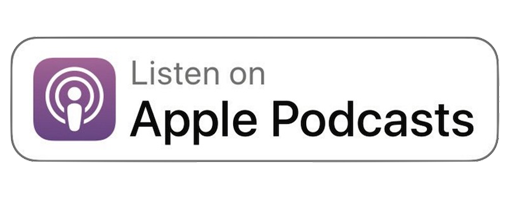TOEFL & IELTS: Qual é a diferença?
FORMATOS, PONTUAÇÃO E MAIS
Atualmente, existem vários sistemas de avaliação na língua inglesa internacional. Hoje vamos dar uma olhada no TOEFL e IELTS. Ao fazer isso, destacarei a diferença entre esses exames, as notas necessárias para passar, os tipos de exames oferecidos pelo IELTS e um bônus para você ver os países de língua inglesa no mapa mundial!
Se você está estudando para o exame TOEFL ou IELTS, certamente se beneficiará de nosso Advanced Vocabulary Master Pack! É um curso completo composto de aulas de áudio e vídeo que ensinam mais de 300 palavras de vocabulário avançado. Além disso, há um PDF para download para que você possa acompanhar todas as palavras.
Bons estudos!
A diferença entre TOEFL e IELTS
TOEFL é um acrônimo para definir o Test of English as a Foreign Language (TOEFL) ou Teste de Inglês como Língua Estrangeira. TOEFL é uma marca registrada da Educational Testing Service (ETS) ou Serviço de Teste Educacional. O primeiro teste foi realizado em 1964 e, desde então, cerca de 20 milhões de alunos já o fizeram. Agora, o TOEFL é aceito por mais de 11.000 universidades em mais de 150 países, incluindo Austrália, Canadá, Nova Zelândia, Estados Unidos, Reino Unido e em toda a Europa e Ásia.
IELTS significa International English Language Testing System ou Sistema Internacional de Teste de Língua Inglesa, e, assim como o TOEFL, é um teste de proficiência em inglês padronizado internacional para falantes não nativos de inglês. O IELTS foi criado em 1989 e é administrado pelo British Council, IDP: IELTS Australia e Cambridge Assessment English.
O IELTS é aceito por várias instituições acadêmicas australianas, britânicas, canadenses, irlandesas e da Nova Zelândia, além de mais de 3.000 instituições acadêmicas nos Estados Unidos e por várias organizações profissionais em todo o mundo. O IELTS tem a vantagem de ser o único Teste de Língua Inglesa aprovado pelo Departamento Britânico de Vistos e Imigração (UK Visas and Immigration). Bem como uma alternativa aos pré-requisitos exigidos para processos de imigração para Austrália, Nova Zelândia e Canadá.
Como o TOEFL, o IELTS é dividido em quatro seções (ouvir, ler, escrever e falar). O IELTS tem a particularidade de ser respondido a lápis. Possui duas versões: Acadêmica e Formação Geral (Academic and General Training), a primeira destinada ao ingresso em Universidades, cursos de graduação e pós-graduação, e a segunda versão utilizada como pré-requisito para imigração, estágios e empregos.
Pontuação do TOEFL e IELTS
TOEFL: Não há pontuação de aprovação ou reprovação. Cada instituição ou agência define seus próprios requisitos de pontuação.
IELTS: Não há pontuação mínima para passar neste teste. O IELTS não aprova nem desaprova. Os resultados para todos os níveis de inglês: uma pontuação de 0-9 será atribuída a cada uma das etapas do teste, o que refletirá a proficiência na língua inglesa. O que acontece é que um resultado do IELTS ou Formulário de Relatório de Teste (TRF) é emitido para todos os participantes, e a pontuação é classificada da seguinte forma: “faixa 1” (não usuário do idioma) variando até “faixa 9” (linguagem especializada do utilizador). Na verdade, cabe a cada instituição ou processo de imigração que ela estabeleça uma pontuação necessária.
Compreenda as pontuações do IELTS
Este conteúdo está disponível no BritishCouncel.org website.
Banda 9: Usuário especialista. Você tem um domínio operacional completo do idioma. O uso do inglês é apropriado, preciso e fluente, e você demonstra compreensão completa.
Banda 8: Muito bom usuário. Você tem um comando totalmente operacional da linguagem, apenas com imprecisões assistemáticas ocasionais e uso impróprio. Você pode interpretar mal algumas coisas em situações não familiares. Você lida bem com a argumentação detalhada e complexa.
Banda 7: Bom usuário. Você tem um domínio operacional do idioma, embora com imprecisões ocasionais, uso impróprio e mal-entendidos em algumas situações. Geralmente você lida bem com linguagem complexa e entende o raciocínio detalhado.
Banda 6: Usuário competente. Geralmente você tem um comando eficaz do idioma, apesar de algumas imprecisões, uso impróprio e mal-entendidos. Você pode usar e compreender uma linguagem bastante complexa, especialmente em situações familiares.
Banda 5: Usuário modesto. Você tem um domínio parcial do idioma e lida com o significado geral na maioria das situações, embora provavelmente cometa muitos erros. Você deve ser capaz de lidar com a comunicação básica em seu próprio campo.
Banda 4: Usuário limitado. Sua competência básica é limitada a situações familiares. Você frequentemente mostra problemas de compreensão e expressão. Você não é capaz de usar uma linguagem complexa.
Banda 3: Usuário extremamente limitado. Você transmite e compreende apenas o significado geral em situações muito familiares. Existem falhas frequentes na comunicação.
Banda 2: Usuário intermitente. Você tem grande dificuldade em entender o inglês falado e escrito.
Banda 1: Não usuário. Você não tem capacidade de usar o idioma, exceto algumas palavras isoladas.
Banda 0: Não tentei o teste. Você não respondeu às perguntas.
Entenda as pontuações do TOEFL
Este conteúdo é encontrado no ETS.org website.
A pontuação do TOEFL é atribuída a quatro pontuações ponderadas por seção e uma pontuação total. Cada seção tem uma faixa de pontuação de 0 a 30.
Eles são somados para uma pontuação total de 0 a 120. A habilidade de proficiência deve ser entendida de acordo com a seção para cada pontuação de habilidade.
Níveis de habilidade: Leitura
- Avançado (24–30)
- Intermediário alto (18–23)
- Intermediário baixo (4–17)
- Abaixo do intermediário baixo (0–3)
Níveis de habilidade: Escuta
- Avançado (22–30)
- Intermediário alto (17–21)
- Intermediário baixo (9–16)
- Abaixo do intermediário baixo (0–8)
Níveis de habilidade: Fala
- Avançado (25–30)
- Intermediário alto (20–24)
- Intermediário baixo (16–19)
- Básico (10–15)
- Abaixo do básico (0–9)
Níveis de habilidade: Escrita
- Avançado (24–30)
- Intermediário alto (17–23)
- Intermediário baixo (13–16)
- Básico (7–12)
- Abaixo do básico (0–6)
Diferentes tipos de exame IELTS
IELTS Indicator (or IELTS Indicador)
O Indicador IELTS é um exame online, enquanto os exames presenciais não estão disponíveis devido à Covid-19.
IELTS Academic (or IELTS Acadêmico)
O IELTS Acadêmico é ideal para quem busca um ensino superior ou está interessado em ingressar no mercado de trabalho em um país de língua inglesa.
IELTS General Training (or IELTS Treinamento geral)
O IELTS Treinamento Geral é indicado para quem deseja fazer cursos fora da área acadêmica e também para quem deseja imigrar e buscar oportunidades de trabalho em países de língua inglesa.
IELTS for UK Visas and Immigrations (UKVI) (or IELTS para vistos e imigrações no Reino Unido (UKVI))
É um IELTS específico para fins de visto e imigração no Reino Unido (UKVI). Para quem quer trabalhar, estudar ou morar no Reino Unido.
Então, qual desses exames devo fazer?
A resposta curta é: depende da sua necessidade!
Avalie o motivo pelo qual você está se propondo a fazer um desses exames e pesquise os pré-requisitos do processo seletivo ao qual você pode se candidatar e assim será fácil saber para qual desses exames você deve estudar.
Para qual você está estudando? Você fez algum deles? Conte-nos sua experiência aqui nos comentários!
Bom aprendizado!
Click on one of the following links to start speaking clearer English!
1) TOEFL MASTER CLASS
2) free mini-course “punctuation mistakes to avoid”
3) Clear English Pronunciation Video Course
4) English Vocabulary – Audio Files & PDF – TOEFL & IELTS

Jhessika Nascimento
Director of International Partnerships
Jhessika Nascimento is a bilingual teacher of English and Portuguese, with degrees in Portuguese and English letters and Teaching in Higher Education. Jhessika is the Director of International Partnerships for Study With Andrea and lives in Brasilia, Brazil.
The following is a TOEFL Reading practice test to help you prepare for the Reading section of the TOEFL test.
Instructions: Read the sample passage below and then answer the questions that follow.
TOEFL Reading Practice Passage
Gorillas are ground-dwelling, predominantly herbivorous apes that inhabit the forest of central Sub-Saharan Africa. The genus Gorilla is divided into two species: the eastern gorillas and the western gorillas (both critically endangered), and either four or five subspecies. They are the largest living primates. The DNA of gorillas is highly similar to that of humans, from 95 to 99% depending on what is included, and they are the next closest living relatives to humans after the chimpanzees and bonobos.
Gorillas' natural habitats cover tropical or subtropical forest in Sub-Saharan Africa. Although their range covers a small percentage of Sub-Saharan Africa, gorillas cover a wide range of elevations. The mountain gorilla inhabits the Albertine Rift montane cloud forests of the Virunga Volcanoes, ranging in altitude from 2,200 to 4,300 metres (7,200 to 14,100 ft). Lowland gorillas live in dense forests and lowland swamps and marshes as low as sea level, with western lowland gorillas living in Central West African countries and eastern lowland gorillas living in the Democratic Republic of the Congo near its border with Rwanda.
(#1) Gorillas move around by knuckle-walking, although they sometimes walk upright for short distances, typically while carrying food or in defensive situations. (#2) A 2018 study investigating the hand posture of 77 mountain gorillas at Bwindi Impenetrable National Park (8% of the population) found that knuckle walking was done only 60% of the time, and they also supported their weight on their fists, the backs of their hands/feet, and on their palms/soles (with the digits flexed). (#3) Studies of gorilla handedness have yielded varying results, with some arguing for no preference for either hand, and others right-hand dominance for the general population. (#4)
The eastern gorilla is more darkly colored than the western gorilla, with the mountain gorilla being the darkest of all. The mountain gorilla also has the thickest hair. The western lowland gorilla can be brown or grayish with a reddish forehead. In addition, gorillas that live in lowland forest are more slender and agile than the more bulky mountain gorillas. The eastern gorilla also has a longer face and broader chest than the western gorilla. Like humans, gorillas have individual fingerprints. Their eye color is dark brown, framed by a black ring around the iris. Gorilla facial structure is described as mandibular prognathism, that is, the mandible protrudes farther out than the maxilla. Adult males also have a prominent sagittal crest.
A gorilla's lifespan is normally between 35 and 40 years, although zoo gorillas may live for 50 years or more. Colo, a female western gorilla at the Columbus Zoo and Aquarium, was the oldest known gorilla at 60 years of age when she died on 17 January 2017.
Questions
1. According to the passage, gorillas can live in
a. a variety of altitudes.
b. several different countries in Africa.
c. thick forests.
d. lowland forests only.
2. All of the following is true about gorillas EXCEPT
a. they primarily eat smaller animals.
b. they live in a forest habitat.
c. their genetics are similar to humans.
d. their diet consists of vegetation.
3. Look at the word predominantly in paragraph 1. The word predominantly in this passage refers to
a. impulsively
b. unfortunately
c. mainly
d. lastly
4. Look at the word inhabits in paragraph 2. The word inhabits in this passage refers to
a. lives in
b. protects
c. goes
d. works
5. The author implies that
a. most gorillas prefer using their left hand over their right.
b. gorillas rarely walk on their knuckles.
c. gorillas regularly walk upright for long distances.
d. studies haven't solidly proven which hand gorillas prefer using.
6. Why does the writer mention that the eastern gorilla also has a longer face and broader chest than the western gorilla?
a. To validate the importance a broad chest in western gorillas
b. To define the meaning of "broad"
c. To highlight a physical difference between types of gorillas
d. To demonstrate that most gorillas are identical in physical build
7. Which of the following statements is true for BOTH eastern and western gorillas.
a. Both eastern and western gorrilas are brown with red foreheads.
b. Both eastern and western gorrilas have unique fingerprints.
c. Both eastern and western gorrilas have thin hair.
d. Both eastern and western gorrilas have light brown eyes.
8. In Paragraph 3, look at the four numbers (#1, #2, #3, #4) that indicate where the following sentence would be added to the passage.
Such a range of hand postures was previously thought to have been used by only orangutans.
Where would the sentence best fit?
(View all the correct answers below.)
Great job! If you're ready to take your TOEFL preparation to the next level, go to StudyWithAndrea.com/TOEFL.
Answers: 1. d 2. a 3. c 4. a 5. d 6. c 7. b 8. #3
Click on one of the following links to start speaking clearer English!
1) TOEFL MASTER CLASS
2) free mini-course "punctuation mistakes to avoid"
3) Clear English Pronunciation Video Course
4) English Vocabulary - Audio Files & PDF - TOEFL & IELTS
About Andrea
Andrea Giordano is the founder of StudyWithAndrea.com and has taught more than 1,000,000 students from 180 countries. Andrea holds a Master of Education (TESOL) from Shenandoah University, and is the former Executive Director of TESOL and ESL programs at Campbellsville University. Andrea is a proven leader in online English teaching and is driven by her passion to help you speak English clearly.






Trackbacks/Pingbacks